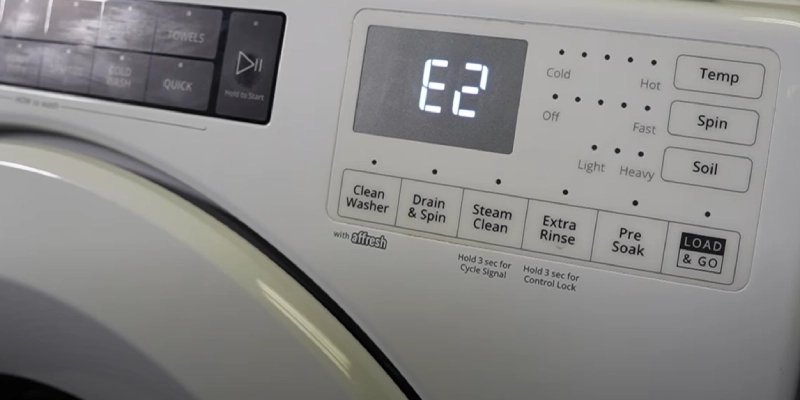
First, let’s break down what an error code “OE” typically indicates. In the world of Whirlpool washing machines, the “OE” error code usually signals a problem with the machine’s drainage system. Essentially, your washer is struggling to expel the water it used during the wash cycle, much like a bathtub that’s refusing to empty despite the plug being pulled. Understanding this can help you decide whether it’s a quick fix or something that requires professional attention.
Understanding Error Code OE
So, what exactly does the “OE” error code mean for your Whirlpool washing machine? Simply put, this code is your appliance’s way of telling you that it’s having trouble draining water. Think of it as a polite nudge from your washing machine, much like a car’s warning light that tells you it’s time to check the engine. If the water isn’t draining properly, it might cause the machine to stop working mid-cycle, leaving you with a soggy pile of clothes.
But why does this happen? There are several potential causes. It could be as simple as a clogged drain hose or a blocked filter. Imagine when a hose in your backyard garden gets kinked; water can’t flow through freely, and the same principle applies here. However, if these basic checks don’t solve the problem, it might point to more complex issues such as a faulty drain pump or electrical faults. That’s when you may need to consider calling a technician.
While it might be tempting to ignore the flashing “OE” code and hope it resolves itself, it’s generally not a good idea. Continuing to use your machine in this state could lead to more significant damage, much like driving a car with the oil light on. If simple fixes don’t work, it’s best to avoid using the machine and investigate further with professional help.
When You Can Fix It Yourself
Before you panic and reach for the phone, there are a few things you can check on your own. First, ensure that the drain hose isn’t kinked or blocked. This is akin to checking if a garden hose has a twist preventing water from flowing through. Gently straighten the hose and see if water starts draining.
Next, inspect the washing machine’s filter. Over time, lint, coins, or small pieces of debris can clog it, just like leaves can block a gutter. Accessing the filter is usually straightforward, located near the front or bottom of the washer. Carefully unscrew it and remove any obstructions. Remember, always have a towel handy, as water might gush out when you remove the filter.
If after these checks, your washer still refuses to drain properly, it could be a sign of something more serious. It’s at this point you might start considering professional assistance, especially if you’re not comfortable diving deeper into the machine’s inner workings.
When To Call A Technician
Calling a technician is a smart move when basic troubleshooting doesn’t resolve the issue. If your drain pump is the culprit, it’s not something that should be tinkered with without proper knowledge. Imagine trying to fix a complex plumbing issue without knowing how all the pipes connect—it could lead to a bigger mess. A skilled technician can quickly diagnose the problem and fix it efficiently.
Another reason to call a technician is if there’s a suspected electrical issue. Whirlpool washing machines have intricate wiring systems, and meddling with these can be dangerous without the right skills and tools. Remember, safety first! Let the professionals handle these issues to prevent accidents or further damage to your appliance.
Finally, continuous drainage issues might suggest an underlying problem with your plumbing. In such cases, a technician can not only fix your washing machine but also advise you on whether you need to call a plumber.
Preventative Tips
To avoid seeing that “OE” error code again, regular maintenance is key. Clean the machine’s filter periodically, just like you’d clean out the lint trap in your dryer. Inspect hoses for wear and tear, and replace them if necessary. This can prevent future clogs and ensure smooth water flow.
It’s also wise to avoid overloading your washing machine. Think of it like carrying an overstuffed bag—eventually, something’s got to give. By sticking to the recommended load size, you’re giving your machine a fair chance to operate efficiently.
If you’re ever unsure, don’t hesitate to reach out to a professional for a quick check-up. It’s always better to be proactive than reactive, saving you time and potential headaches down the line. Remember, taking care of your washing machine means it’ll take care of you, keeping your laundry routine running like clockwork.